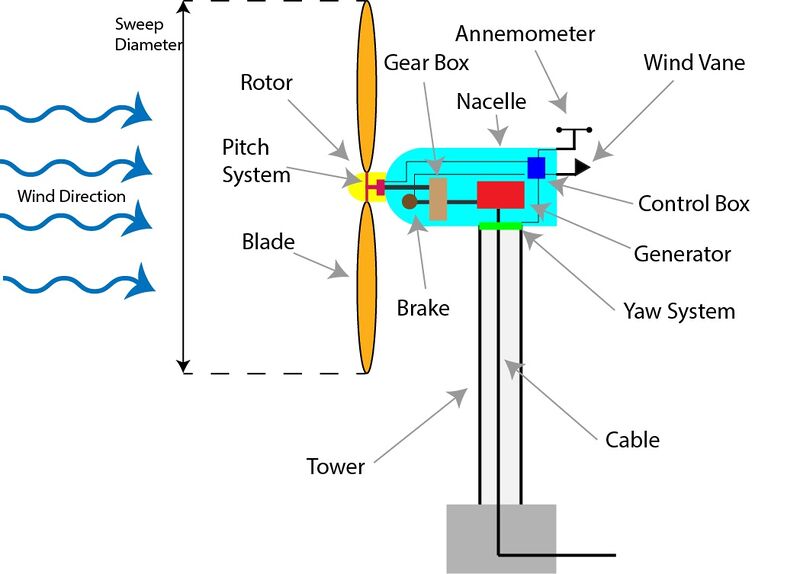Floating Offshore Wind Turbine Generator
Technology Roadmap Sections and Deliverables
Team 3 is to present a "level 2” roadmap of Wind Turbine Generators. The following code is the identifier.
- 2WTG - Wind Turbine Generator
Roadmap Overview
Offshore wind power is a type of wind power generation that converts the power of the wind into electricity, mainly at sea or on lakes. As the global trend calls for a shift to renewable energy sources, wind power is playing an important role among them. Onshore wind power is gradually being introduced; for example, as of 2022, the cumulative global wind power capacity will reach 906 GW.
On the other hand, onshore wind power accounts for the majority of this capacity, with offshore wind power accounting for only 7.1%. This is because offshore wind power is a relatively new technology, and technical limitations and high costs have been the main factors that have slowed its introduction. In particular, the harsh marine environment, technical challenges in transporting electricity over long distances, and higher facility construction and maintenance costs than for onshore wind have hindered its introduction. However, with advances in technology and cost reductions, the introduction of offshore wind power has begun to gain momentum in recent years, and it is considered an important pillar of the renewable energy field in the future. In particular, countries surrounded by oceans are expected to increase their energy self-sufficiency by utilizing their abundant wind resources.
There are two types of offshore wind power technologies: “implantable” and “floating. The implantation type is a method in which the generator is fixed to the seabed and is usually installed in shallow water within 50 meters in depth. This method is characterized by its mature technology and its ability to achieve high power generation efficiency through the use of large, robust generators. In Europe, where there are many shallow waters, this implantation type is the mainstream. In Europe as a whole, offshore wind power is already a major source of renewable energy in many countries, with more than 50 GW of installed capacity as of 2021.
Floating wind turbines, on the other hand, can be used in countries with small coastal areas or in areas with deep waters, because they can be installed in deeper waters and there are fewer restrictions on where they can be installed. For example, Japan, the west coast of the United States, and Norway are candidates. Currently, the floating system is still in its technological infancy, with particular issues being stability at sea, how to transport electricity on land, and cost reduction. In fact, the cost of the floating type is said to be about twice that of the implantation type, and large-scale commercialization is expected to take time. However, as technology advances, the introduction of floating offshore wind power is expected to increase significantly in the future.
It is expected that technological innovation and government support measures will lead to the expansion of offshore wind power generation, including floating wind power.
